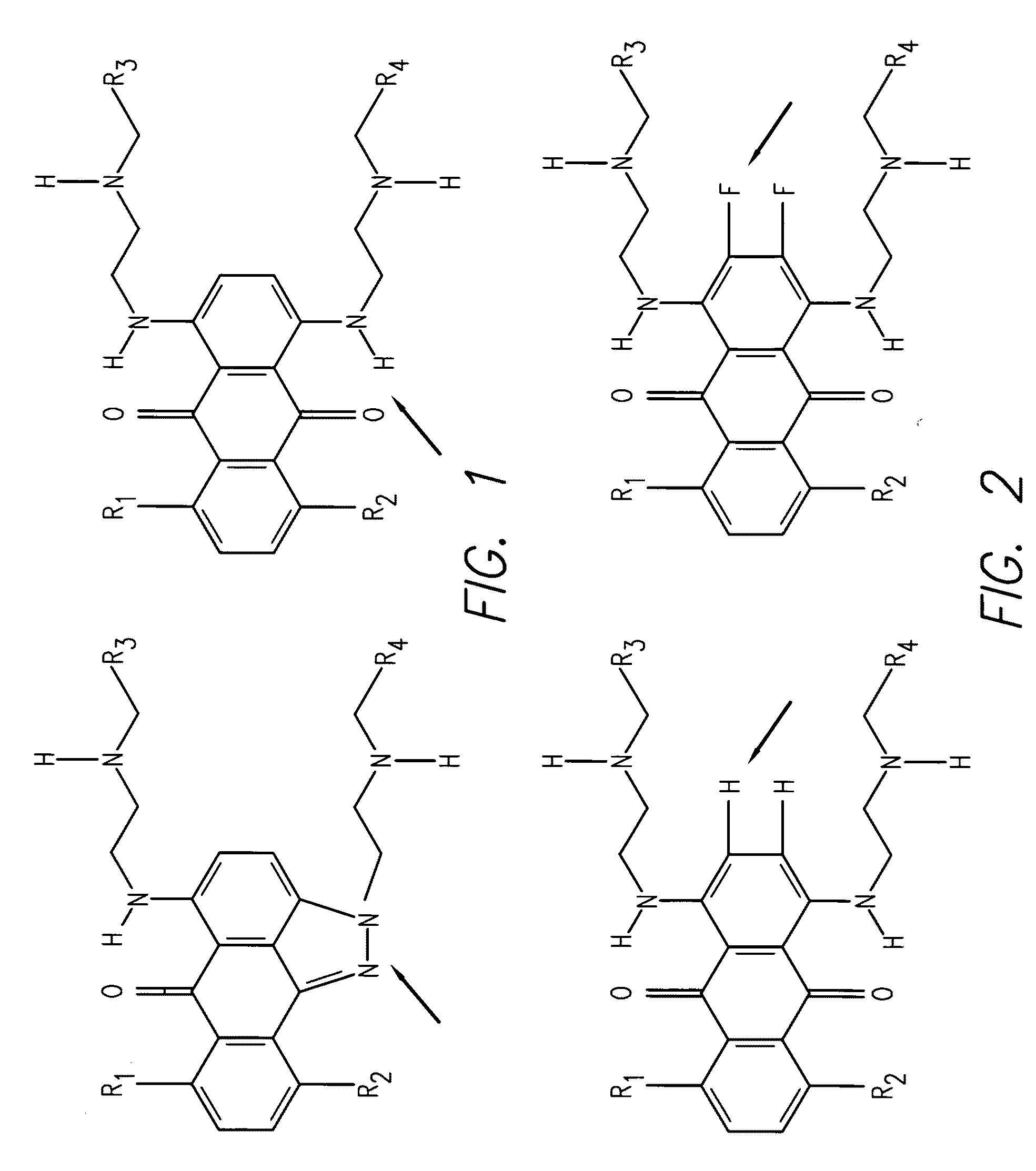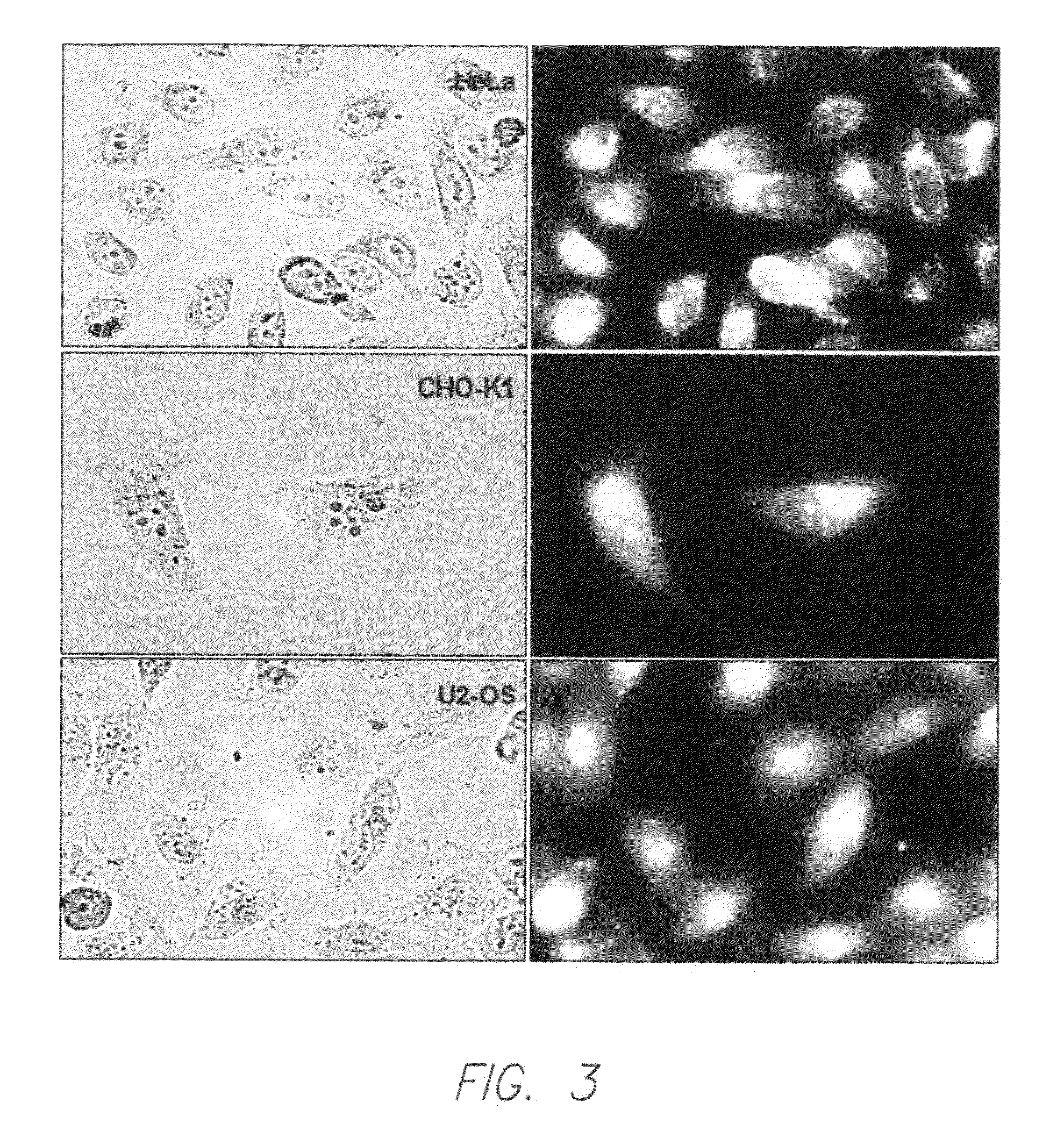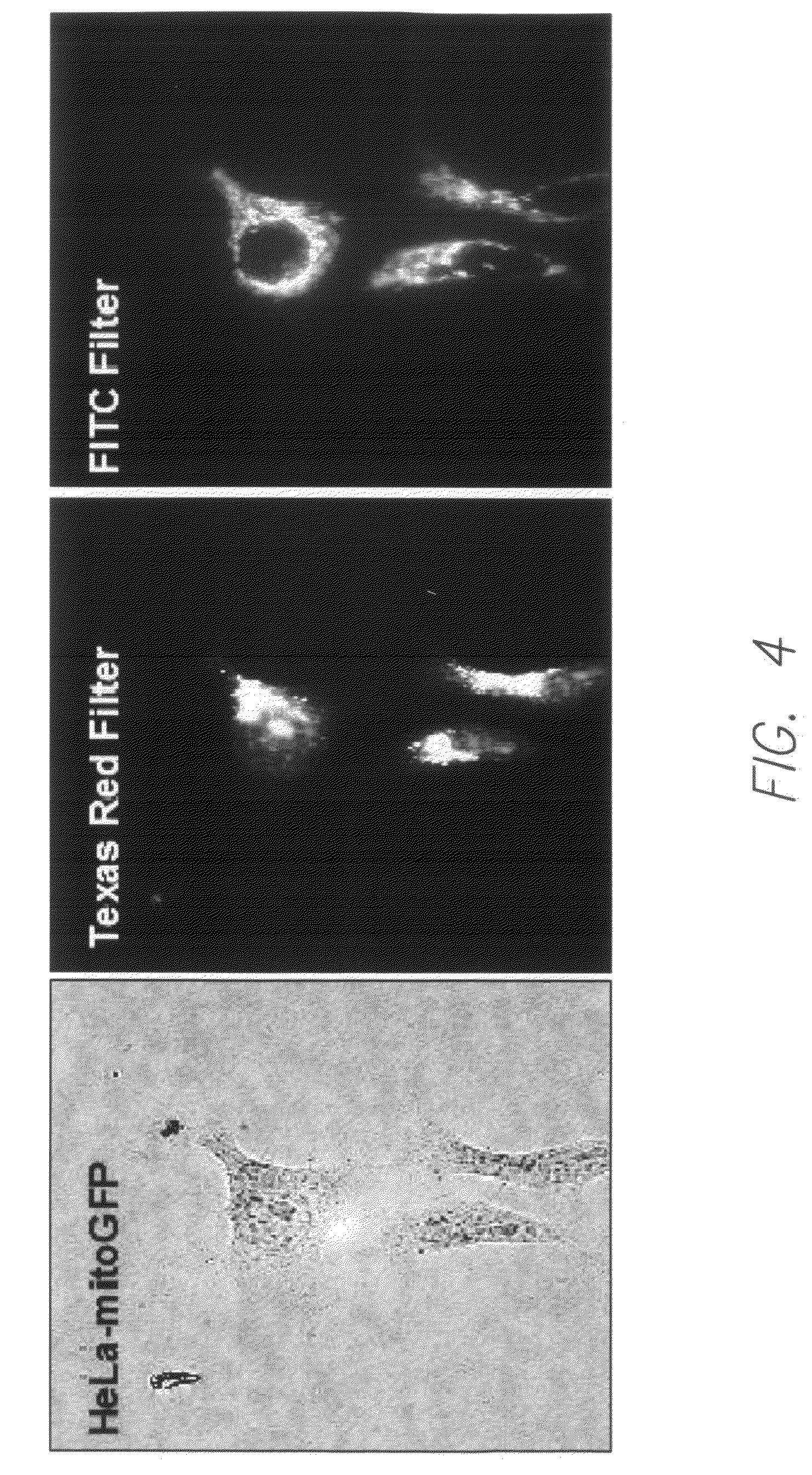Fluorochromes for organelle tracing and multi-color imaging
- Summary
- Abstract
- Description
- Claims
- Application Information
AI Technical Summary
Benefits of technology
Problems solved by technology
Method used
Image
Examples
example 1
Synthesis of 1,4-bis(2-(dimethylamino)ethylamino)-2,3-difluoro-5,8-dihydroxyanthracene-9,10-dione
[0104](Compound 1)
[0105]A mixture of 1,2,3,4-tetrafluoro-5,8-dihydroxyanthraquinone (1.0 g, 3.2 mmol) and N,N-dimethylethylenediamine (3 mL) in CH2Cl2 (30 mL) was stirred at room temperature for 12 hours. After evaporation of the solvents, the residue was purified by silica gel chromatography using isocratic solvent system of EtOAc / MeOH / Et3N (10:10:1) yielding 830 mgs of Compound 1 as dark blue product. Abs (max, PBS pH 7.4)=568 nm; Em=675 nm. The structure of Compound 1 is given below:
example 2
Synthesis of trifluoro-anthraquinone ceramide (Compound 2) and difluoro-anthraquinone ceramide
[0106](Compound 3)
[0107]A mixture of 1,2,3,4-tetrafluoro-5,8-dihydroxyanthraquinone (62.4 mg, 10.2 mmol), D-sphingosine (123 mg, 0.4 mmol) in CH2Cl2 (8 mL) was stirred at room temperature for 12 h. After evaporation of the solvents, the residue was purified on silica gel chromatography eluted with EtOAc / MeOH / Et3N (10:10:1) to afford monoamine substituted Compound 2 (115 mg) and diamine substituted Compound 3 (34 mg). Abs (max, PBS pH 7.4)=533 nm; Em=625 nm for Compound 2 and Abs (max, PBS pH 7.4)=572 nm; Em=697 nm for Compound 3. The structures of these compounds are given below:
example 3
Synthesis of 1,2,3-trifluoro-5,8-dihydroxy-4-(2-(2-hydroxyethylamino)ethylamino)anthreacene-9,10-dione (Compound 4) and 2,3-difluoro-5,8-dihydroxy1,4-bis(2-(2-hydroxyethylamino)ethylamino)anthreacene-9,10-dione (Compound 5)
[0108]A mixture of 1,2,3,4-tetrafluoro-5,8-dihydroxyanthraquinone (1.0 g, 3.2 mmol) and 2-(2-aminoethylamino)ethanol (3.26 mL, 32 mmol) in CH2Cl2 (20 mL) was stirred at room temperature for 12 hours. After evaporation of the solvents, the residue was purified by silica gel chromatography using isocratic solvent system of EtOAc / MeOH / Et3N (10:10:1) yielding 200 mg of Compound 4 and 350 mg of Compound 5. Abs (max, PBS pH 7.4)=593 nm for Compound 4 and Abs (max, PBS pH 7.4)=574 nm for Compound 5. The structures of these compounds are given below:
PUM
| Property | Measurement | Unit |
|---|---|---|
| Dynamic viscosity | aaaaa | aaaaa |
| Composition | aaaaa | aaaaa |
| Structure | aaaaa | aaaaa |
Abstract
Description
Claims
Application Information
 Login to View More
Login to View More - R&D
- Intellectual Property
- Life Sciences
- Materials
- Tech Scout
- Unparalleled Data Quality
- Higher Quality Content
- 60% Fewer Hallucinations
Browse by: Latest US Patents, China's latest patents, Technical Efficacy Thesaurus, Application Domain, Technology Topic, Popular Technical Reports.
© 2025 PatSnap. All rights reserved.Legal|Privacy policy|Modern Slavery Act Transparency Statement|Sitemap|About US| Contact US: help@patsnap.com



